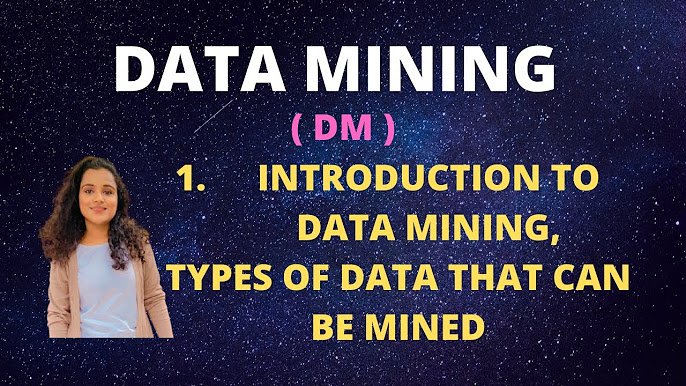In today’s fast-paced world, we are swimming in data—tons of it, every single day. But how do we make sense of all this information? Enter data mining. It’s like finding a needle in a digital haystack, uncovering hidden patterns, trends, and insights that can drive smarter decisions. Let’s dive deep into what data mining is, why it’s important, and how it works.
What is Data Mining?
At its core, data mining is the process of sifting through large datasets to identify patterns, correlations, and trends. It’s almost like panning for gold in a river of information—you’re looking for valuable nuggets buried deep within all the noise. Companies and organizations use data mining to predict future trends, understand customer behaviors, and improve decision-making processes. But this is not just about numbers—it’s about translating raw data into actionable insights.
Why is Data Mining Important?
Why should we care about data mining? Well, in the age of information, data is power. But data alone is meaningless unless we can interpret it. That’s where data mining steps in. By analyzing large datasets, businesses can gain competitive advantages, improve efficiency, and even predict customer needs before they arise. Think about online shopping, where your favorite store seems to know what you want before you even click. That’s data mining in action, and it’s changing the game across industries.
The Data Mining Process: How Does Data Mining Work?
The data mining process might sound complex, but it’s a systematic approach. It generally follows these key steps:
- Data Collection: First, you need the raw data. This could be anything from sales figures to social media interactions.
- Data Cleaning: Not all data is useful. Some of it is incomplete or irrelevant, so the next step is to clean the data by removing errors and filling in gaps.
- Data Transformation: This is where data is organized into a suitable format for analysis.
- Data Mining: Finally, we reach the heart of it—analyzing the data using algorithms to identify patterns, trends, and anomalies.
- Interpretation: The last step is making sense of the results and turning them into actionable insights.
The data minings process is essential in ensuring that the right steps are taken to extract valuable insights from raw data. Companies that master this process find themselves ahead in understanding consumer behavior and market trends.
Types of Data Mining Techniques
There isn’t just one way to approach data minings—there are several techniques, each with its own strengths. Here are a few of the most popular data mining techniques:
- Classification: This technique is used to categorize data into different classes. For example, an email service might classify emails as spam or non-spam.
- Clustering: Here, the goal is to group similar data points together. For instance, marketing departments might cluster customers based on purchasing behaviors.
- Association: Ever wonder why certain products are recommended together online? That’s association mining, identifying relationships between variables.
- Regression: This technique predicts future trends based on past data. It’s commonly used in forecasting sales or stock prices.
- Anomaly Detection: This identifies outliers in a dataset, which could indicate fraud or errors.
By leveraging the right data minings techniques, businesses can uncover trends and insights they might have otherwise missed.
Data Mining Software and Tools
To make sense of all this datas, businesses rely on specialized data minings software and tools. Some popular ones include:
- RapidMiner: Known for its ease of use and extensive library of algorithms.
- SAS Enterprise Miner: A robust tool that helps businesses streamline their data minings processes.
- Apache Mahout: Open-source software designed for machine learning and data minings.
- KNIME: A versatile tool that supports complex data analysis workflows.
Each of these data minings software tools has its strengths, depending on the complexity of the datas and the goals of the organization. Using the right data minings software allows companies to process vast amounts of data efficiently, leading to actionable insights.

Benefits of Data Mining
Why are so many companies turning to data mining? The benefits of data minings are substantial. Let’s take a look:
- Better Decision-Making: Data-driven decisions lead to better outcomes. Data minings provides the insights needed to make informed choices.
- Increased Efficiency: By identifying patterns, businesses can streamline operations, saving time and money.
- Customer Personalization: Companies can tailor products and services to meet customer needs, increasing satisfaction and loyalty.
- Risk Management: Data minings can detect fraud or predict potential issues, allowing companies to take preventive measures.
The benefits of data minings extend across industries, helping organizations reduce costs, enhance customer satisfaction, and improve operational efficiency.
Industry Examples of Data Mining
Data mining is everywhere, from retail to healthcare. Let’s explore some industry-specific examples:
- Retail: Online retailers like Amazon use data minings to recommend products, predict inventory needs, and optimize pricing strategies.
- Healthcare: In the medical field, data minings helps in diagnosing diseases, predicting patient outcomes, and improving healthcare delivery.
- Finance: Banks and financial institutions rely on data minings to detect fraud, assess credit risk, and develop personalized offers for customers.
These are just a few examples, but the applications of data minings are virtually limitless.
Data Mining vs. Data Analytics and Data Warehousing
It’s easy to confuse data minings with terms like data analytics and datas warehousing. So, what’s the difference?
- Data Mining: As we’ve covered, this involves analyzing datas to find patterns.
- Data Analytics: This is a broader term that encompasses all types of data analysis, not just minings. It focuses on deriving insights from data to support decision-making.
- Data Warehousing: Think of this as the storage unit for data. It’s where all the raw information is kept before being analyzed through minings or analytics.
Understanding the relationship between data minings vs. data analytics and data warehousing is essential for businesses looking to optimize their data strategies. These processes work in tandem to turn raw data into valuable insights.
The History and Origins of Data Mining
Data mining might seem like a modern concept, but its roots go back further than you think. The term itself was coined in the 1990s, but the practice of analyzing data for patterns dates back to the 1960s when statisticians and mathematicians first developed algorithms to sort through large datasets. With the rise of computing power and the internet, data minings has become a cornerstone of the digital age.
Data Mining: A Look to the Future
As we look ahead, the future of data minings is exciting. With advancements in artificial intelligence and machine learning, data minings is becoming even more sophisticated. Soon, we may see data minings being used to solve even more complex problems, from predicting climate change to revolutionizing healthcare.
Read More: The Future of Sociology Studies: Upcoming Trends and Research Directions
Conclusion
In today’s world, data minings is more than just a buzzword—it’s an essential tool for unlocking the hidden potential of datas. From improving business efficiency to enhancing customer experiences, the benefits of data minings are vast. And as technology continues to evolve, so too will the capabilities of data minings.







